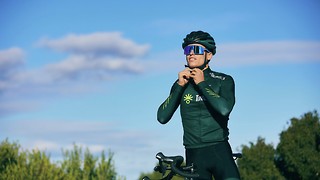A queerer perspective: an ode to Grayson Perry
Louis Shankar celebrates Grayson Perry’s versatility as an artist – balancing personal and political

I think Grayson Perry might be my favourite person in the world right now. Awarded the Turner Prize – arguably the most prestigious award for contemporary British art – he is best known for his pottery, harnessing traditional crafts for subversive, iconoclastic gestures. He also works with tapestries and woodcuts, as well as recently designing a house, featuring in a TV programme for Channel 4.
“The whole building is in effect the story of an imaginary woman, Julie”, wrote Perry, “an Essex Everywoman whose biography I have written in a long poem and provides a social history of Essex since the war.” It blurs the boundary between the public and the private, with the house being rented out to holidaymakers with a ballot to stay in it available on Living Architecture.
It is actually Perry’s TV presence that I would like to focus on. He has appeared on Question Time and Have I Got News for You in full drag – as Claire, his female alter-ego, an avid Labour supporter with an acrid wit. He was the BBC’s Reith lecturer in 2013, giving a series of talks entitled Playing to the Gallery (since published by Penguin), in which he analysed contemporary art. “What is 'good' or 'bad' art – and does it even matter?” he asked. “Is there any way to test if something is art, other than a large group of people standing around looking at it?”
In 2012, his first series of documentaries was broadcast by Channel 4: All In The Best Possible Taste with Grayson Perry explored taste across the classes in contemporary Britain, producing six tapestries from his discoveries, 'The Vanity of Small Differences'. Honest, interesting and touching, it was a fantastic show (still available on All 4) and went on to win the BAFTA for Specialist Factual in 2013.
More pertinent to my overall discussion, though, was his second series that explored identity issues through a series of portraits. He included Chris Huhne and Rylan Clark, a deaf family, and a British woman who had converted to Islam. A more critical lens was applied to a group of women who celebrated their weight and to a faction of the Jesus Army, a neo-charismatic evangelical Christian movement.
His most sensitive works, though, were in my opinion his group portrait of a gay couple with a mixed-race adopted son and a statue for a young transgender man, Alex. Clearly, this wasn’t a straightforward issue to tackle, with various identity issues overlapping with one another; Perry handled this with a deft touch, showing how art can still approach difficult ideas with a sincerity and affection that other media can rarely match.
The second work, I Am A Man, showed a real tenderness; issues of gender and sexuality have been central to Perry’s practice for years, although they tend to focus on his own transvestitism. Inspired by Alex’s childhood hero, Peter Pan, the boy who never grew up, the work also drew on ceremonial Benin bronzes, artefacts that celebrated an archaic, traditional masculinity.
Masculinity was the subject of Perry’s most recent series, All Man, broadcast this month. It should be compulsory viewing. He looked at different facets of traditional masculinity through three different tribes: cage fighters, the police and the men they arrest, and bankers and other City workers. The first was actually the most surprising and illuminating, exploring the issues of masculinity as a mask, its mass mourning and lack of alternative. The high rate of male suicide was broached, a shrine to it created as part of the artwork Perry made, which elicited incredibly moving reactions from those who helped inspire the piece.
His analysis of the City worker was less subtle, making a giant phallic pot to embody the latent, inescapable masculinity that pervaded the profession – despite those involved claiming the opposite. It is incredibly pertinent to a Cambridge audience: the bankers and hedge-fund managers all claimed to Perry that they were open to change, politically correct, that their masculinity made no impact on their status; each had gone through the same system, though, trained and conditioned to behave in such a way as to succeed. Perry vehemently disagreed, as did the female city workers and genuinely progressive individuals that he interviewed.
Masculinity, gender, and class repeatedly overlap and combine in Perry’s art, brought more explicitly to the surface in his sometimes critical, often sensitive explorations of modern life for television. His artworks, particularly his pots and tapestries, are in equal measure funny and serious: they attack genuine issues, going for the jugular – disguised prejudices, consumerist hypnotism – but do so with humour, caricature.
He might not deal with LGBT+ issues in the most straightforward ways; his pots are emphatically kitsch and queer, though, like his neon wigs and Little Bo Peep dressed. But when he does look to identity issues, he balances the personal and political with aplomb on a stage, both artistically and within the wider cultural realm, that few others are given.
 News / Government announces £400m investment package for Cambridge25 October 2025
News / Government announces £400m investment package for Cambridge25 October 2025 News / Climate and pro-Palestine activists protest at engineering careers fair25 October 2025
News / Climate and pro-Palestine activists protest at engineering careers fair25 October 2025 News / Cambridge don appointed Reform adviser23 October 2025
News / Cambridge don appointed Reform adviser23 October 2025 Arts / Why is everybody naked?24 October 2025
Arts / Why is everybody naked?24 October 2025 Lifestyle / How will you spend Halloween night?26 October 2025
Lifestyle / How will you spend Halloween night?26 October 2025








